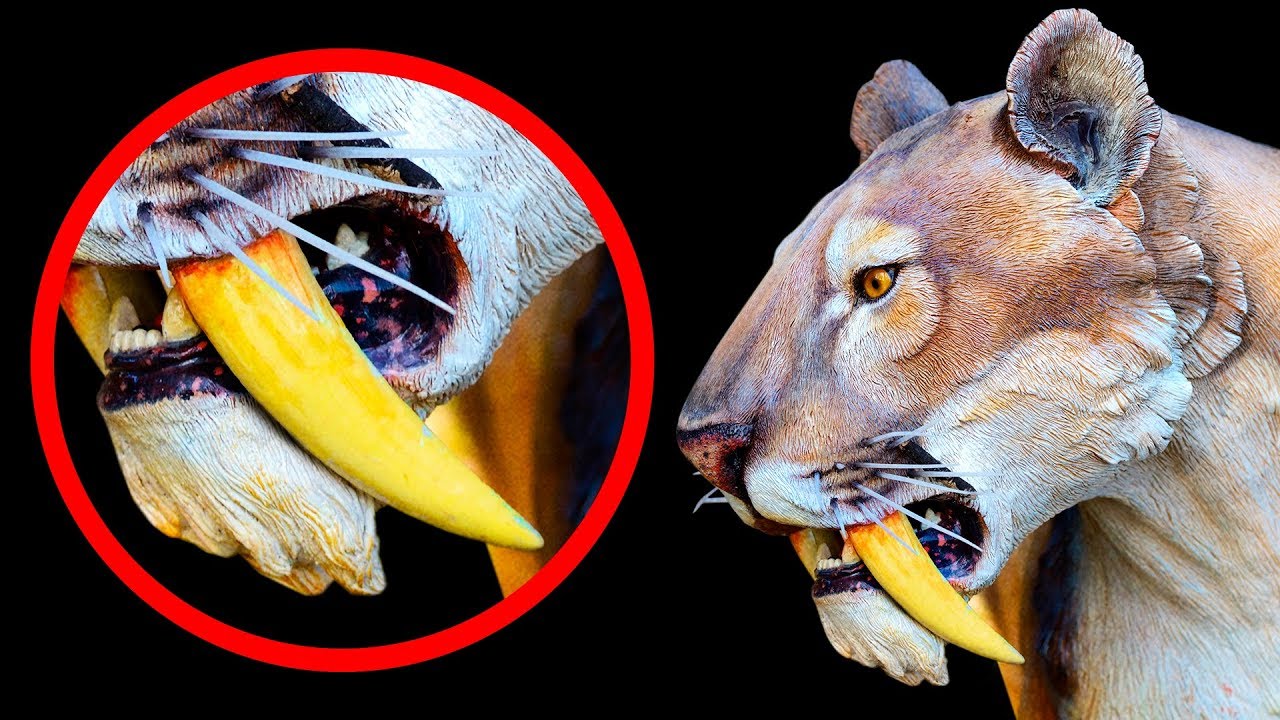10 Extinct Animals Scientists Are Ready to Bring Back
Do you know that scientists are almost ready to bring back some species that have been long gone? A T-Rex and other dangerous creatures aren’t on the VIP list, so we won’t see them in the not-so-distant future. But some of our most beloved characters from the Ice Age movies can be brought back to life!
Instead of using the controversial term “cloning,” scientists prefer to say “make un-extinct.” To-may-to, to-mah-to, the idea is the same. An animal that died out thousands of years ago can’t be brought back to life unless it’s cloned. And therein lies the problem. For successful cloning, scientists need to have almost completely undamaged animal DNA. That’s why some species are more likely to be resurrected than others.
TIMESTAMPS:
The woolly mammoth 2:01
The saber-toothed tiger 3:00
The Moa 3:48
The ground sloth 4:27
The dodo 5:19
Woolly rhinoceros 6:12
The Irish elk 6:44
The Baiji river dolphin 7:26
The Siberian unicorn 8:05
The Neanderthal 8:55
Music: https://www.youtube.com/audiolibrary/music
SUMMARY:
– While most of the woolly mammoths died out about 10,000 years ago, there was a population of about 500 to 1,000 of them living on Wrangel Island as recent as 1650 B.C.E. The woolly mammoth was roughly the size of an African elephant.
– The saber-toothed tiger was about the size of your typical modern-day big cats. It weighed from 200 to 600 pounds and could get up to 13 feet long. The saber-toothed tiger usually had a muscular neck, bobbed tail, powerful front legs, and dagger-like teeth that protruded from the upper jaw and could grow just under a foot long!
– The moa was a huge flightless bird that looked kinda like an ostrich, minus the wings. We know of about 10 members of the moa family. Some were no bigger than a turkey while others reached a height of 10 feet, making this bird the largest that has ever inhabited our planet.
– Ground sloths are likely to be successfully resurrected since they were still walking the Earth about 8,000 years ago. Even better, some samples of their DNA have already been received from undamaged hairs of this animal.
– The dodo became extinct just 80 years after it had been discovered. Its only known habitat was Mauritius Island, where the dodo had been living peacefully for who knows how long until the Dutch showed up in the 1590s.
– Besides the woolly mammoth, there’s one more fluffy extinct creature, the woolly rhinoceros, that scientists want to bring back. This animal still lived in the Arctic snows pretty recently, about 10,000 years ago. This furry rhino is quite famous too; it often makes an appearance in ancient cave art, like in the French Chauvet-Pont-d’Arc Cave.
– The Irish elk, also called the giant deer, was one more animal that didn’t quite manage to survive the Ice Age. This creature mostly died out about 12,000 years ago. But researchers have discovered Irish elk fossils in Siberia that are only 7,000 to 8,000 years old.
– The Baiji river dolphin went extinct in 2006, making it the first cetacean (that’s whales, dolphins, and porpoises) to die out directly due to the negative impact of human activity. It’s obvious by now that since the extinction is quite recent, there’s a sea of DNA samples at hand that make resurrection pretty much a guaranteed success.
– A Siberian unicorn skull discovered in Kazakhstan proved that the animal had actually disappeared just 29,000 years ago. That’s good news for people who wanna see a real unicorn someday!
– Bringing the Neanderthal back would be the easiest task of them all. Scientists already have a map of its genome. It’s not a question of whether or not we can, but if we should…
Subscribe to Bright Side : https://goo.gl/rQTJZz
—————————————————————————————-
Our Social Media:
Facebook: https://www.facebook.com/brightside/
Instagram: https://www.instagram.com/brightgram/
5-Minute Crafts Youtube: https://www.goo.gl/8JVmuC
—————————————————————————————-
For more videos and articles visit:
http://www.brightside.me/



![[ID: jvNU5bwzclI] Youtube Automatic](https://bizimtube.com/wp-content/uploads/2021/03/id-jvnu5bwzcli-youtube-automatic-236x133.jpg)
![[ID: 0yCJMt9Mx9c] Youtube Automatic](https://bizimtube.com/wp-content/uploads/2021/03/id-0ycjmt9mx9c-youtube-automatic-236x133.jpg)
![[ID: vAJM5EdDwjU] Youtube Automatic](https://bizimtube.com/wp-content/uploads/2021/03/id-vajm5eddwju-youtube-automatic-236x133.jpg)
![[ID: LxOmofEFub4] Youtube Automatic](https://bizimtube.com/wp-content/uploads/2021/03/id-lxomofefub4-youtube-automatic-236x133.jpg)
![[ID: wFAh77GBsHs] Youtube Automatic](https://bizimtube.com/wp-content/uploads/2021/03/id-wfah77gbshs-youtube-automatic-236x133.jpg)
![[ID: tjwrG4Debc4] Youtube Automatic](https://bizimtube.com/wp-content/uploads/2021/03/id-tjwrg4debc4-youtube-automatic-236x133.jpg)
![[ID: _28bYGZtnU8] Youtube Automatic](https://bizimtube.com/wp-content/uploads/2021/03/id-28bygztnu8-youtube-automatic-236x133.jpg)
![[ID: 1e7bhUjUEJ8] Youtube Automatic](https://bizimtube.com/wp-content/uploads/2021/03/id-1e7bhujuej8-youtube-automatic-236x133.jpg)
![[ID: QjyCviSKY2U] Youtube Automatic](https://bizimtube.com/wp-content/uploads/2021/03/id-qjycvisky2u-youtube-automatic-236x133.jpg)
![[ID: -5i-vB4-kFk] Youtube Automatic](https://bizimtube.com/wp-content/uploads/2021/03/id-5i-vb4-kfk-youtube-automatic-236x133.jpg)
![[ID: covHhQgr5kU] Youtube Automatic](https://bizimtube.com/wp-content/uploads/2021/03/id-covhhqgr5ku-youtube-automatic-236x133.jpg)
![[ID: mX7FEHws43A] Youtube Automatic](https://bizimtube.com/wp-content/uploads/2021/03/id-mx7fehws43a-youtube-automatic-236x133.jpg)